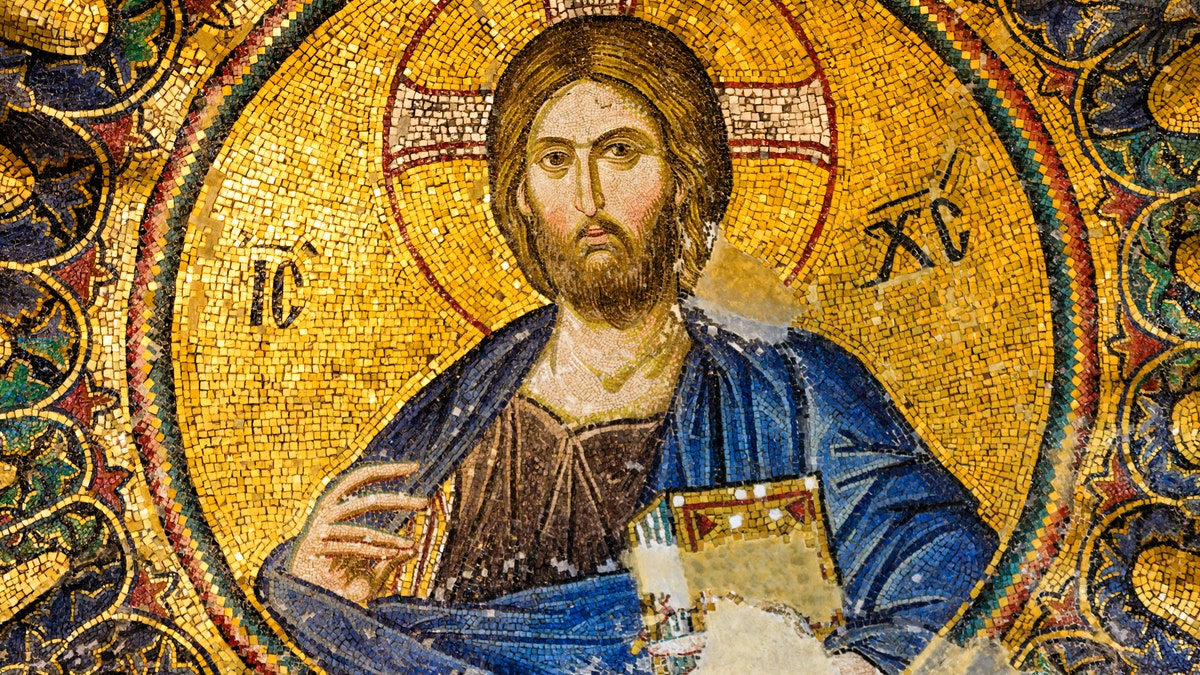
File photo - 13th century mosaic of Jesus Christ in the church of Hagia Sophia in Istanbul, Turkey (iStock) (hadynyah)
Biblical scholars have discovered the first-known original Greek copy of an ancient forbidden Christian text that purportedly describes Jesus’ secret teachings to his “brother” James, an early leader of the Church.
Geoffrey Smith and Brent Landau, religious studies scholars at The University of Texas at Austin, located the rare text in Oxford University archives earlier this year. The experts found several fifth- or sixth-century A.D. Greek fragments of the First Apocalypse of James, one of the books from an ancient collection known as the Nag Hammadi library. Previously, the text was thought to be preserved only via translations in the Egyptian Coptic language.
Only a small number of texts from the Nag Hammadi library, a collection of 13 Coptic Gnostic books discovered in Egypt in 1945, have been found in Greek, their original language of composition. Also known as the “Gnostic Gospels,” the books are seen as key documents for understanding Gnosticism, an ancient belief system.
NEW EVIDENCE DATES CHRIST’S TOMB TO ROMAN ERA, MATCHING HISTORICAL RECORDS
The First Apocalypse of James, like the other books in the Nag Hammadi library, was deemed heretical or forbidden by the church because it fell outside of the fourth-century religious boundaries that defined the 27-book New Testament.

File photo - a page from the Coptic translation of the First Apocalypse of James from the Coptic Museum in Cairo, Egypt. Digitized by Claremont College (Nag Hammadi Library, Oxford University)
Experts were thrilled by the discovery of the ancient fragments, which are owned by the Egypt Exploration Society.
“To say that we were excited once we realized what we’d found is an understatement,” said Smith, an assistant professor of religious studies, in a statement. “We never suspected that Greek fragments of the First Apocalypse of James survived from antiquity. But there they were, right in front of us.”
INCREDIBLE 1,500-YEAR-OLD CHRISTIAN MOSAIC UNCOVERED IN ISRAEL
The document is said to describe Jesus’ secret teachings to his “brother” James. Details of the “heavenly realm” and future events, such as James’ inevitable death, are revealed, according to The University of Texas at Austin.

Geoffrey Smith (left) and Brent Landau take a closer look at the Greek fragment identified as the First Apocalypse of James. The fragments--and rights to published images of them--are owned by the Egypt Exploration Society. (Photo provided by Geoffrey Smith, UT Austin)
“The text supplements the biblical account of Jesus’ life and ministry,” Smith added.
There are a number of interpretations of references to Jesus' siblings in biblical texts. The Gospel of Matthew and the Gospel of Mark, for example, refer to Jesus' brothers, including James.
ANCIENT ROMAN SHIPWRECKS, STUNNING ARTIFACTS, DISCOVERED NEAR EGYPTIAN PORT
James, also known as "James the Just" was a leader of the early church - one interpretation of “brother” may thus be a close spiritual relationship as opposed to a fraternal biological link. The First Apocalypse of James describes James as not Jesus’ brother “materially.”
Other interpretations describe James as Jesus' step-brother or cousin.
The manuscript, which uses neat, uniform handwriting and words separated into syllables, was probably a teacher’s model used to help students read and write, according to the experts. “The scribe has divided most of the text into syllables by using mid-dots. Such divisions are very uncommon in ancient manuscripts, but they do show up frequently in manuscripts that were used in educational contexts,” said Landau, a lecturer in the UT Austin Department of Religious Studies, in the statement.
Landau notes that the teacher who produced the manuscript likely “had a particular affinity for the text.” The document, he explains, appears to be a complete copy of the forbidden ancient text.
This story has been updated with information from the Gospels of Matthew and Mark.
Follow James Rogers on Twitter @jamesjrogers
